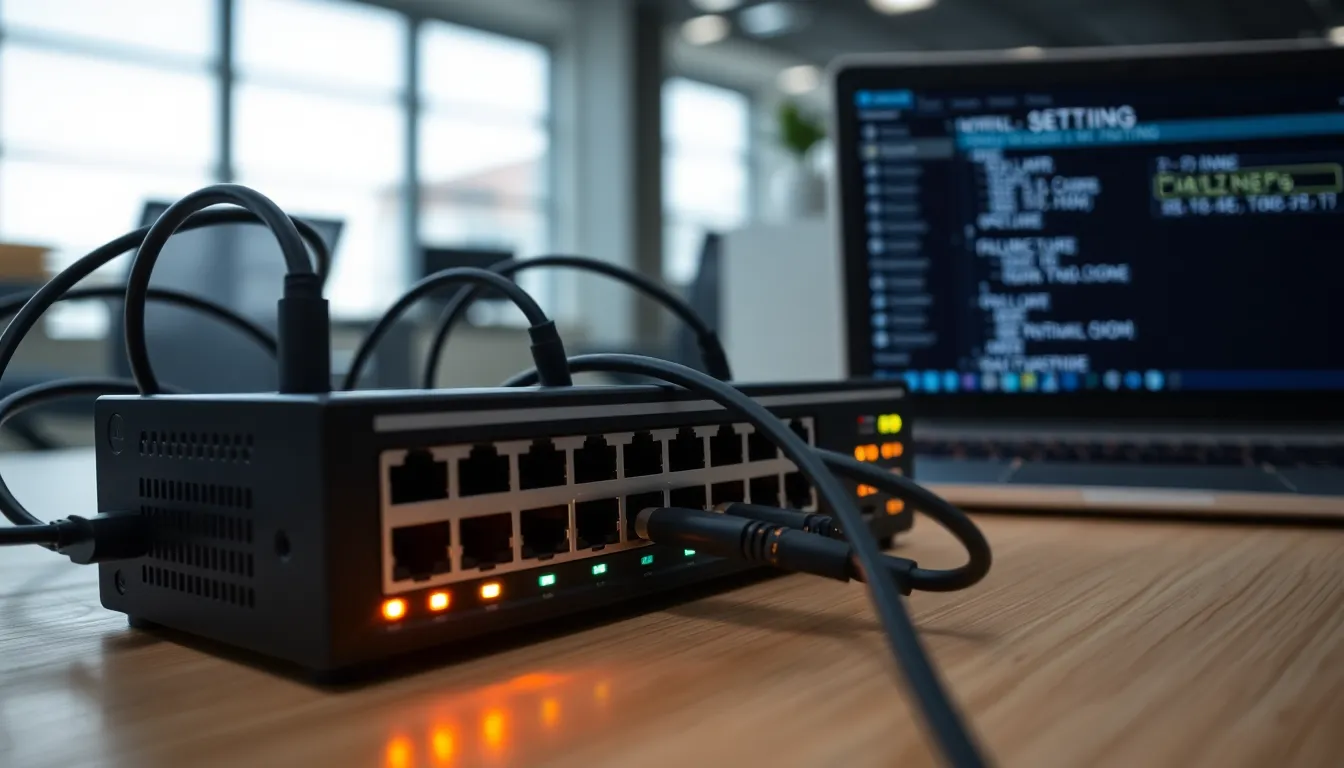In the vast universe of IP addresses, 172.17.1.10.8090 stands out like a unicorn at a horse race. This seemingly random string of numbers and dots holds the key to unlocking a treasure trove of network functionality. Whether you’re a tech wizard or just someone trying to make sense of the digital chaos, understanding this address can be your golden ticket to smoother connections and fewer headaches.
Table of Contents
ToggleOverview of 172.17.1.10.8090
The IP address 172.17.1.10.8090 operates within a private network range. This address provides specific functionalities that enhance local area network (LAN) activities. Understanding this IP address involves recognizing its structure: the first portion denotes the device’s location while the latter signifies the port number.
He or she can identify this address as part of the Class B IP range. Devices configured with this address typically operate behind Network Address Translation (NAT), which conserves public IP usage. Network professionals often assign private IP addresses to enhance security and traffic management.
The significance of port 8090 stems from its common use in web applications and media services. Applications utilizing this port include various management interfaces and streaming services. Interacting with the address might involve leveraging specific protocols, like HTTP or HTTPS, based on the intended purpose.
Connecting devices through this IP address allows for resource sharing and communication. Efficiency improves as local devices interact seamlessly, reducing the need for external connections. Each device on the network can communicate through this address, facilitating data flows for applications across multiple platforms.
Users experiencing connectivity issues should consider verifying the network setup. Network diagnostics tools can identify potential conflicts or misconfigurations. Configuring firewalls appropriately ensures a smoother interaction with services hosted on this address.
Overall, grasping the function of 172.17.1.10.8090 enhances one’s ability to navigate complex network environments effectively. Being familiar with such IP structures provides meaningful insights into maintaining local network performance and security.
Common Use Cases

The IP address 172.17.1.10.8090 finds usage in various network scenarios. Its applications extend from network configuration to hosting services.
Network Configuration
Network configuration benefits significantly from the use of 172.17.1.10.8090. This address allows devices within a local area network to communicate effectively. Users typically assign it to specific devices, providing unique identifiers for routing and management. The address aids in directing traffic efficiently within the private network. Network administrators rely on it to ensure proper device connectivity. Enhancements in routing protocols often occur due to the effective management of such addresses. Additionally, it’s common to implement IP range considerations for improved network segmentation.
Application Hosting
Application hosting frequently leverages the port number associated with the address, specifically port 8090. Many web applications utilize this port for serving content and media services. Developers often rely on it to create robust systems that support user interactions. By using this specific port, applications can spawn specialized services optimized for performance. Successful hosting scenarios include media streaming and interactive web applications, where quick data exchange is critical. Many organizations choose port 8090 to optimize their internal communication processes effectively. Overall, applying 172.17.1.10.8090 enhances the operational capacity of hosted applications.
Benefits of Using 172.17.1.10.8090
Utilizing 172.17.1.10.8090 offers multiple advantages for network management. Increased efficiency occurs as devices within the local area network can communicate swiftly and reliably through this address. Security improves significantly since this address operates within a private network, minimizing exposure to external threats.
Network performance benefits arise from the efficient use of port 8090, which excels in handling web applications and media services. Enhanced resource sharing takes place, enabling smooth operations among devices. Facilitation of user interactions happens seamlessly, thanks to the robust capabilities of applications hosted on this port.
Troubleshooting becomes easier with this address, as network administrators can identify connectivity issues more effectively. Streamlined network configuration ensures that devices maintain proper connectivity and follow optimized routing protocols. Users experience fewer frustrations when navigating complex environments, which ultimately enhances productivity.
Flexibility in usage presents itself through the various applications that utilize 172.17.1.10.8090. Media streaming services, for instance, thrive on this port, providing high-quality content delivery. Increased collaboration ensues in organizations that depend on effective internal communication processes supported by this address.
Overall, adopting 172.17.1.10.8090 within network infrastructure leads to improved performance and security. Enhanced connectivity allows for better management of local devices, contributing to an efficient digital landscape.
Potential Issues and Limitations
Understanding 172.17.1.10.8090 involves recognizing potential issues that can arise in a network environment. Two significant aspects include security concerns and performance factors.
Security Concerns
Security is a primary issue when using 172.17.1.10.8090. Devices operating within private network space may still face unauthorized access if configuration lacks necessary safeguards. Network Address Translation provides some protection, but vulnerabilities can exist if firewalls or access controls are improperly set. Ensuring strong authentication methods and regular updates reduces risk. Additionally, using this IP address for sensitive data transmission without encryption increases exposure to threats.
Performance Factors
Performance also requires careful consideration. Bandwidth limitations can hinder the effectiveness of applications hosted on port 8090. Latency can impact responsiveness in media streaming or web applications, which may frustrate users. Network congestion might also occur when multiple devices access resources simultaneously, leading to degraded performance. Implementing Quality of Service (QoS) protocols can help prioritize traffic, ensuring optimal performance levels. Regular monitoring of the network’s performance allows administrators to make informed adjustments in real-time.
Best Practices for Implementation
To ensure effective implementation of the IP address 172.17.1.10.8090, prioritize secure configurations. Implement strong authentication methods to safeguard against unauthorized access. Regularly update network devices to protect against emerging vulnerabilities.
Conduct routine performance monitoring to identify potential bottlenecks. Utilization of Quality of Service (QoS) protocols significantly helps optimize bandwidth allocation, enhancing overall performance. Deploy network diagnostics tools to troubleshoot connectivity issues swiftly and accurately.
Utilize the address for efficient network configuration by assigning static IP addresses to crucial devices. This approach ensures consistent connectivity and reduces conflicts. Evaluate the network layout frequently to confirm that the address scheme aligns with organizational needs.
Consider segmenting the network into subnets to minimize congestion. Subnetting facilitates better traffic management, reducing latency during peak usage. Implementing VLANs can also enhance data flow while maintaining security.
Regular training for network administrators is essential. Knowledgeable staff can address potential issues proactively and improve overall network management. Encourage them to stay informed about the latest trends in network technology.
Lastly, document all configurations and changes made to the network. Accurate records assist in troubleshooting and streamline future adjustments. Following these best practices fosters a robust network environment centered around the IP address 172.17.1.10.8090, enhancing communication and security across devices.
Understanding the IP address 172.17.1.10.8090 is crucial for anyone navigating local network environments. It not only facilitates efficient communication among devices but also enhances security and performance. By implementing best practices like secure configurations and regular monitoring, users can maximize the benefits of this address while minimizing potential risks.
With its applications in media streaming and network management, 172.17.1.10.8090 serves as a vital tool for both individuals and organizations. Embracing its capabilities leads to a more streamlined and secure digital experience, ultimately paving the way for improved connectivity and collaboration.



